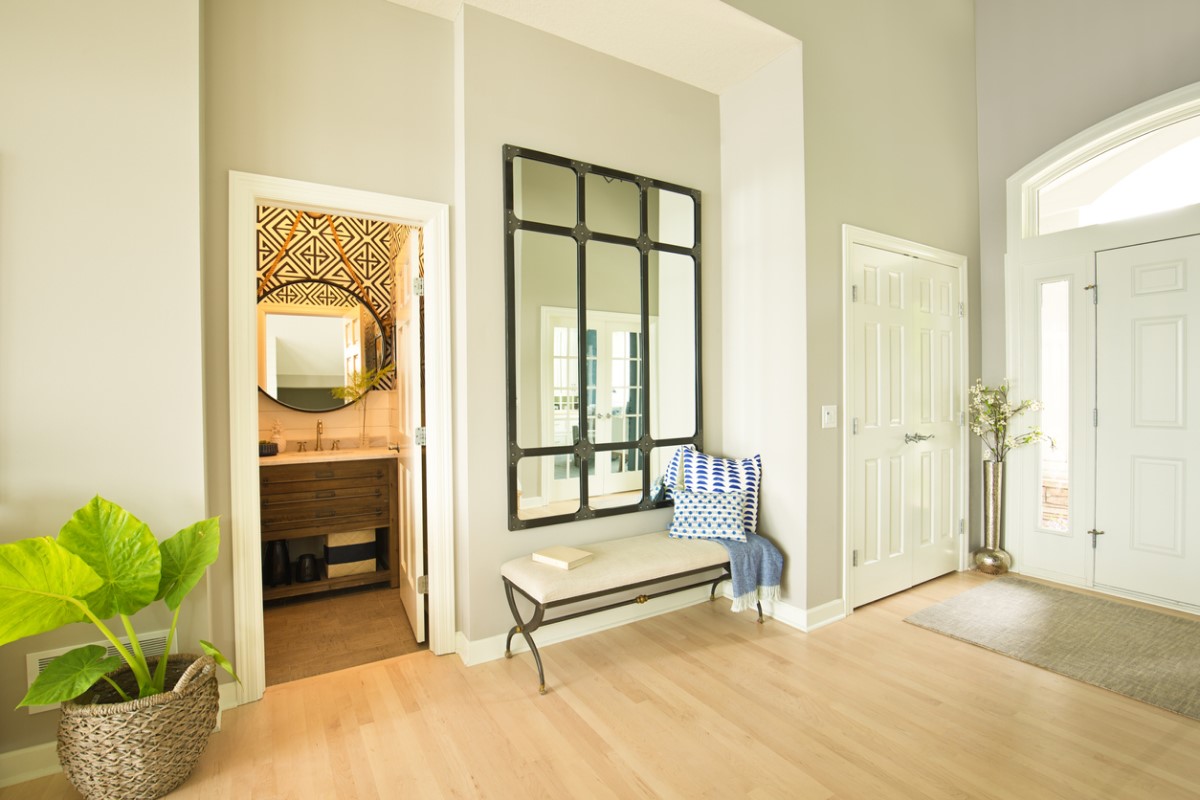We may earn revenue from the products available on this page and participate in affiliate programs. Learn More ›
Q: What would be the best way to hang a 40-pound framed mirror? Should I find the studs in the wall or use a picture hook without finding the stud?
A: Your mirror is too heavy for picture hooks alone, but a wall anchor would likely do the trick to attach them to a wall made of drywall or plaster.
A variety of drywall anchors are available these days, each with a slightly different design; all are more reliable than the old-fashioned ribbed plastic plugs.

Tried-and-True Advice
“I’ve had good luck with OOK 3-pin hangers in both drywall and plaster walls. I also like the OOK 1-piece picture/mirror hanger that slips in behind the wall cladding. For brick, my go-to is a #10 x 3-inch Spax Multi-Material screw.”
—Mark Clement, Contributing Writer
Use a winged anchor designed to hold the weight (or more) of your large mirror.
In your case, I would recommend a winged anchor, such as the Pop-Toggle from Hillman, in part because its screw may be withdrawn and reinserted any number of times. That flexibility comes in handy if you have not determined precisely where to position the mirror. Pre-drill and place the anchor into the wall, then insert an appropriate sheet metal screw to secure the picture hook.
Besides winged anchors, other types of drywall anchors include self-drilling screw anchors, molly bolts, and strap toggles. First, check to see how each one is rated for the type of wall material on which you’re planning to hang your mirror.
If you can locate and screw into a stud, you can hang a heavy mirror from a picture hook without an anchor.
The only downside of relying on wall studs is that you cannot control their location; they are seldom located on the part of the wall where you want to hang an item. But if you get lucky and there happens to be a stud in the position where you would like to hang a mirror, then use a 2½-inch wood screw for a wall with ½-inch drywall. For plaster walls, use a 3-inch screw in order to be certain that at least 2 inches of the screw threads bite into the stud.

Q: I am trying to hang a 75-pound mirror on a brick wall. I have 100-pound gauge wire (doubled), heavy-duty hooks, and masonry nails, but I’m still afraid it’s going to fall. Do the masonry nails go into the brick or the mortar? Is there a safe way to do this?
If you want to hang a heavy mirror on a brick wall, it’s a little more work. But in comparison to drywall or plaster, a brick wall is able to carry a much heavier load. As above, you have a variety of wall anchors from which to choose.
Newer polyethylene expansion anchors twist as you drive them into brick, resulting in superior holding power.
The Poly-Set from Red Head is an option for light-duty use with shelves, mailboxes, and frames. Remember that you will need a masonry drill bit of the diameter specified by the anchor manufacturer. Then, drill into the brick at least ¼-inch deeper than the length of the anchor, and insert the plastic plug until its flange is flush with the brick wall. Pass the screw through a picture hanging hook of your choice and into plastic, and tighten with a screwdriver.
For securing the heaviest heaviest items, select a steel picture hook with strong nails designed for brick and concrete.
The OOK picture hanger series by Hillman, for example, feature “bendless” masonry nails that take hold in concrete or the mortar between bricks where normal nails fall short. Start with the OOK hanger that boasts a 100-pound weight capacity for this heavy-duty. Then, drive the two slim, brass-plated nails through the picture hook’s unique precision channels into the wall behind. In minutes, you’re ready to hang that heavy mirror once and for all.


